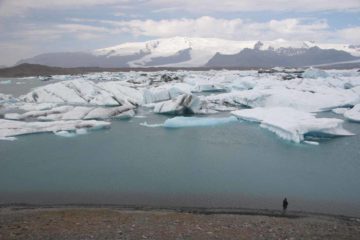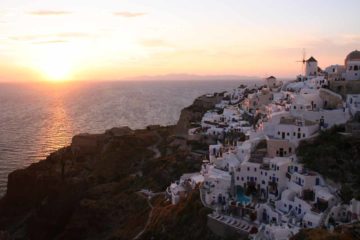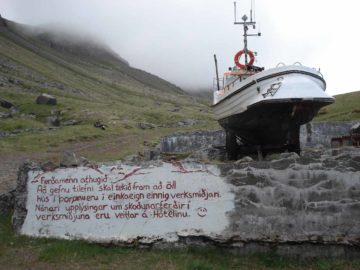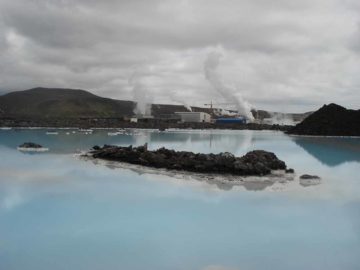About Fagrifoss
Fagrifoss was one of the attractive waterfalls that we really had to work for as it was situated more towards the remote interior highlands of Iceland. What made this waterfall attractive was its rounded brink and segmented plunge with its lower end slanting and giving the falling water more of a fan shape at its base. Adding to its scenic allure was how it contrasted with the rugged and desolate scenery the falls was nestled in.
However, what Julie and I remembered most about this waterfall was the four-wheel drive adventure it took to even get here. In fact, most of the drama regarding the accessibility of this waterfall had to do with tackling the very rough and rugged 4wd road with a handful of river crossings. The physical exertion to reach the falls was practically negligible, and hence we gave it a “1” rating for difficulty. More details on the drive to get here are described in the directions below.
Ultimately, the 4wd road would lead to the fissures and craters of Lakagígar (or Laki for short). The significance of Laki was that its eruption in 1783 was one of the largest ever recorded during human history. Its eruption lasted for 8 months, spewed toxic gas that resulted in mass deaths of livestock in Iceland, killed 20% of the Icelandic population, and affected the crop yields in Europe. It was even speculated that this eruption might have caused agricultural hardships that sparked the French Revolution!
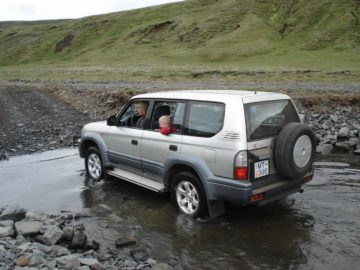
In any case, once we finally managed to leave the car at the trailhead, we then took a short walk along the cliffs and outcrops overlooking the waterfall and the steep gorge the river carved out. Perhaps the best view that we were able to get was on the way to the end rather than the end itself (see photo at the top of this page). That was because we couldn’t see the bottom of the falls from behind the short barriers at the official overlook. We would’ve had to go past the barriers and get dangerously close to the edge of the unstable cliffs to get the full view from there.
Recently, Lakagígar was absorbed into Vatnajökull National Park. Previously, it was part of Skaftafell National Park though we weren’t aware of that during our 2007 visit.
Finally, I looked up my Icelandic dictionary to learn what the name of the falls might mean, and I found the word “fagur”, which was an adjective meaning “beautiful”. So that could suggest that this waterfall’s name would translate into something meaning “Beautiful Falls”.
Related Top 10 Lists
No Posts Found
Trip Planning Resources
Nearby Accommodations
This content is for members only. See Membership Options.Featured Images and Nearby Attractions
This content is for members only. See Membership Options.Visitor Comments:
Got something you'd like to share or say to keep the conversation going? Feel free to leave a comment below...No users have replied to the content on this page
Visitor Reviews of this Waterfall:
If you have a waterfall story or write-up that you'd like to share, feel free to click the button below and fill out the form...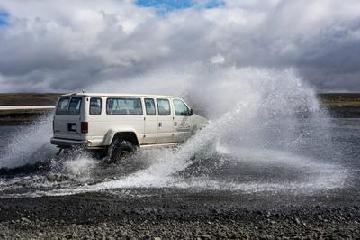 How to get to Fagrifoss and Lakagigar June 6, 2018 3:05 pm - Hi! I am born and raised in Kirkjubæjarklaustur,Iceland. I would like to inform you about the mountain roads in Iceland. All mountain roads in Iceland are closed during the period of thaw in soil. Mountain roads are marked with "F" in front of the road number and means Fjallvegur in Icelandic or Mountain road. Most… ...Read More
How to get to Fagrifoss and Lakagigar June 6, 2018 3:05 pm - Hi! I am born and raised in Kirkjubæjarklaustur,Iceland. I would like to inform you about the mountain roads in Iceland. All mountain roads in Iceland are closed during the period of thaw in soil. Mountain roads are marked with "F" in front of the road number and means Fjallvegur in Icelandic or Mountain road. Most… ...Read More
